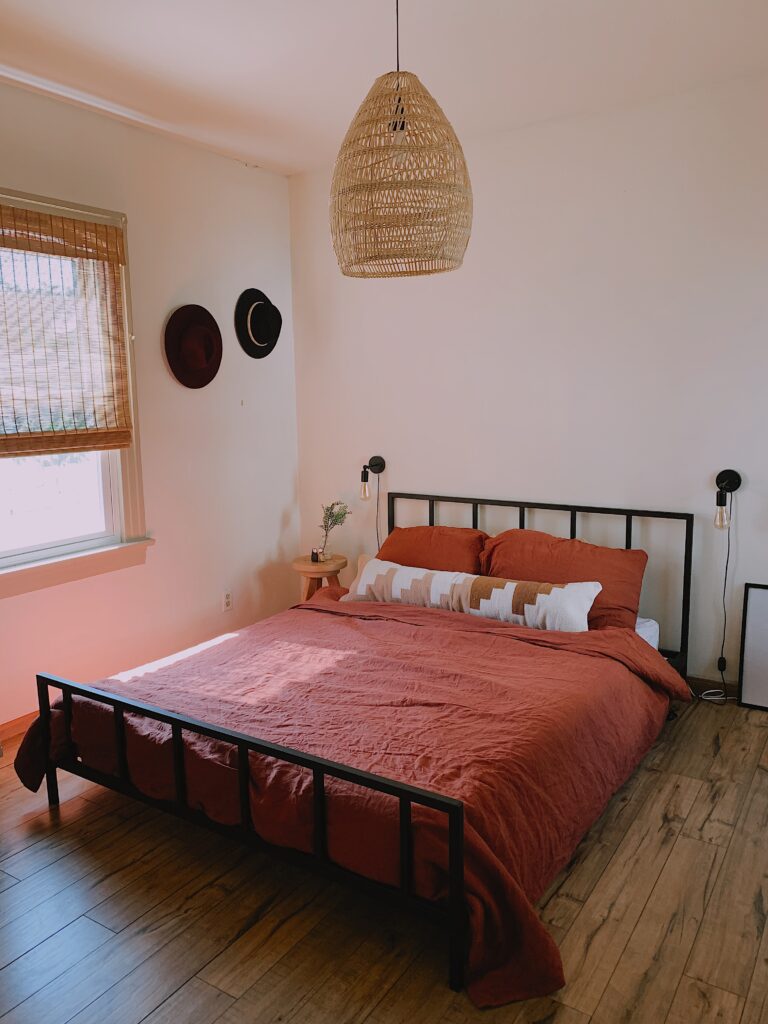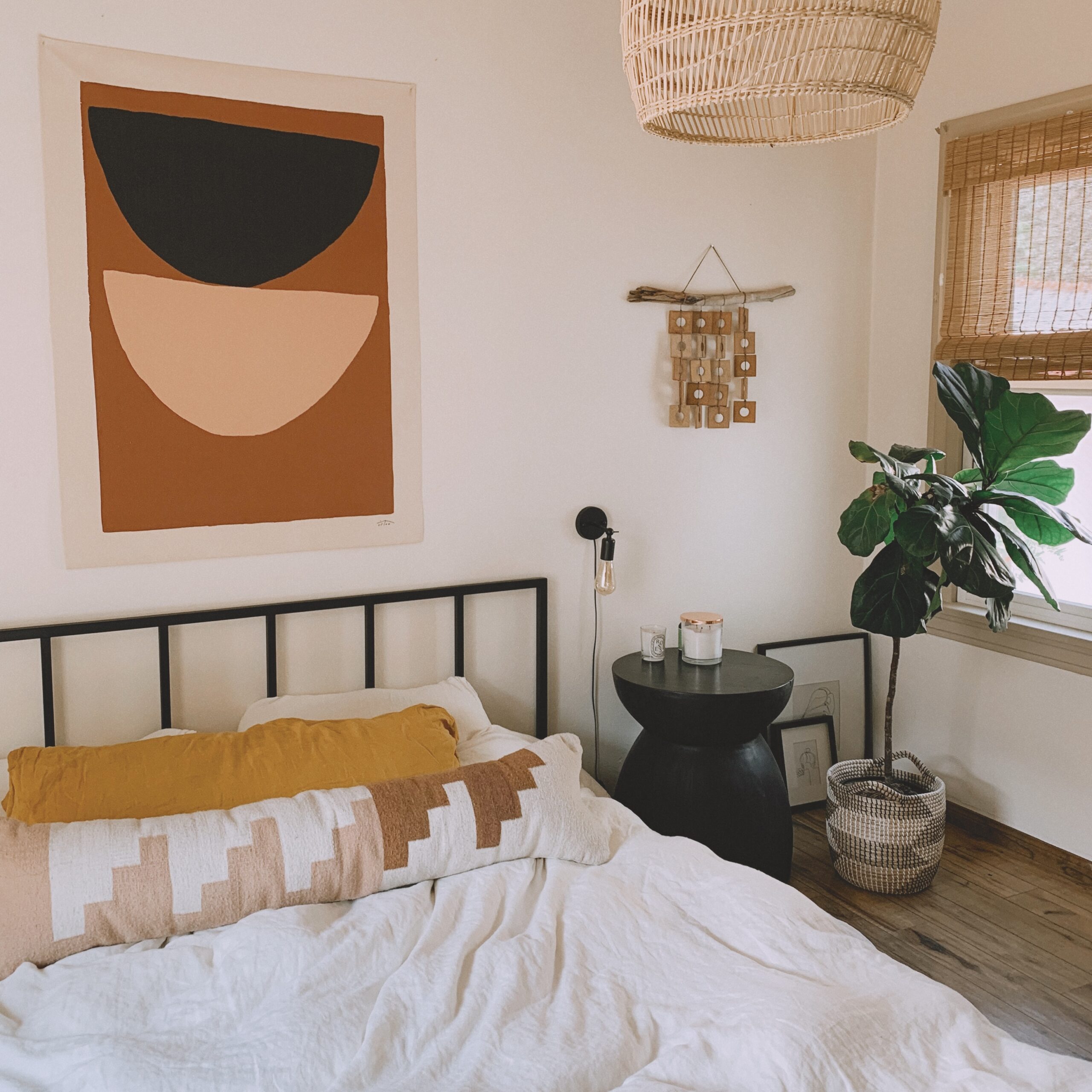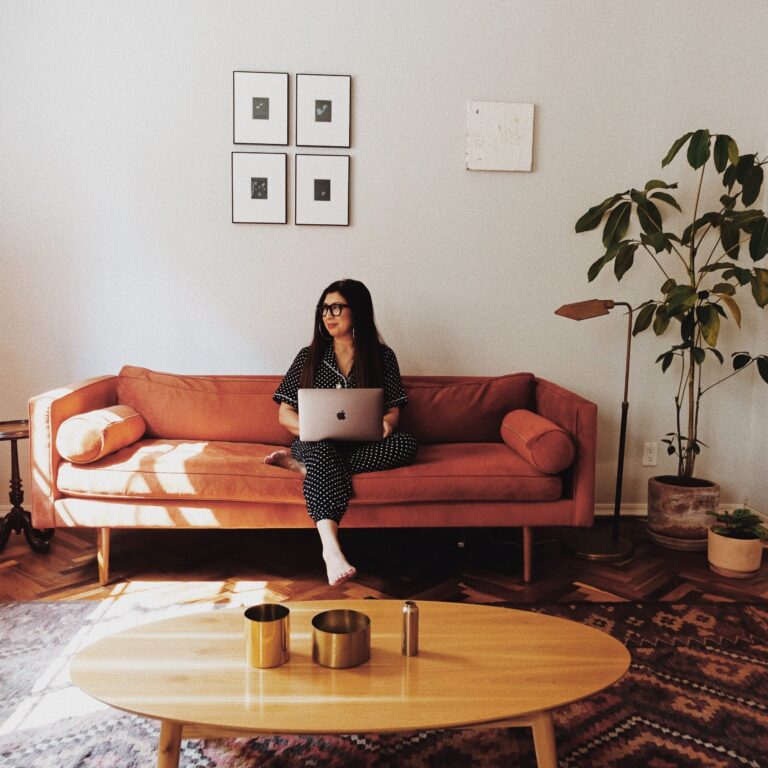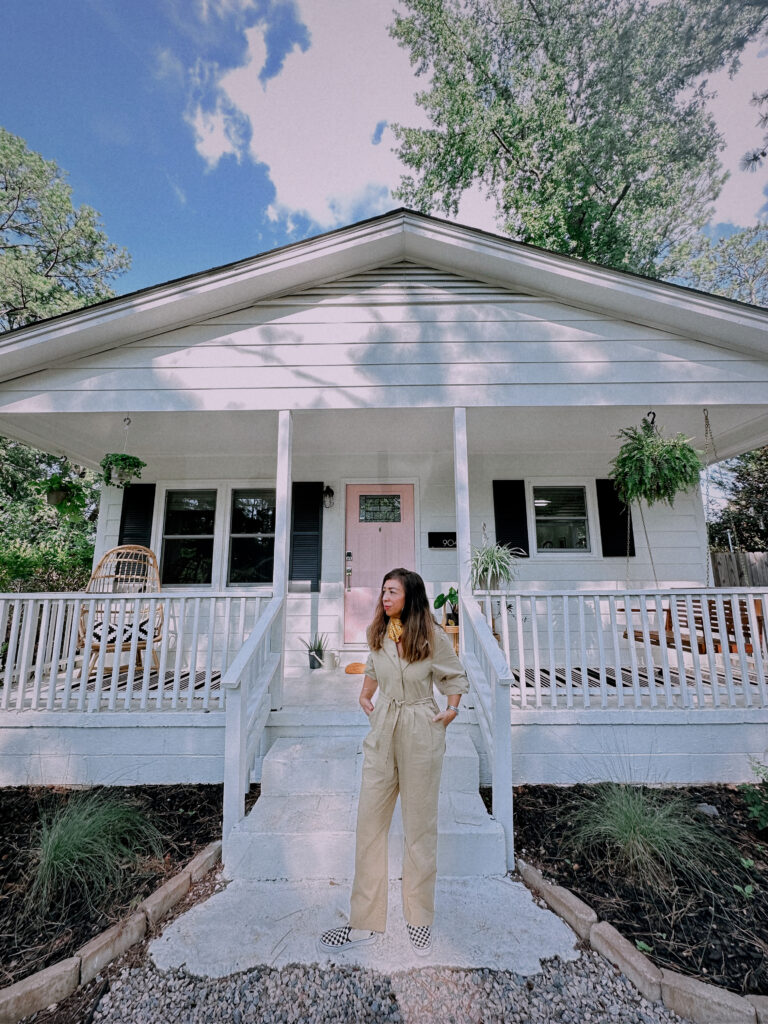Ways to Keep Your Bedroom Allergy-Free

Since I moved into our new home, I was really excited to decorate our main bedroom. There were so many visual boards of beautifully decorated bedrooms with rugs, curtains, shelves, and lots of pillows. After decorating our bedroom, I realized I was having allergy symptoms such as itchy eyes, wheezing, and a runny nose which triggered my asthma. I had a tough time falling asleep. I took an allergy test several years ago and the results indicated that I was allergic to dust, dust mites, and mold. Of course, it made sense that the bedroom decor were not allergy-friendly! I started research ways to eliminate triggers and discovered with these 8 simple steps, I can get some quality shut-eye.
1. Vacuum
Dust mites love finding a home in carpets, so be sure to vacuum at least twice a week to remove the little critters. Use a double bag and try wearing a mask to avoid inhaling dust that’s sent into the air from vacuuming.
2. Get Rid of Your Curtains and Rugs
Get rid of heavy curtains and rugs (boo hoo, I know), they’re dust catchers. Use washable cotton curtains or in our case, rollable bamboo shades to easily dust off. If you like to keep your heavy curtains, regularly wash them in warm or hot water (at least 130 degrees Fahrenheit (ca. 54 °C)) to kill dust mites. Also, wipe window frames and glass to prevent mold and mildew from growing. Fortunately, there are also hypoallergenic rugs made today that can even lessen allergens from floating into the air. Popular allergen-free rugs include polyester and nylon materials, low piles, and natural machine-washable cotton.
3. Protect Your Bedding
Cover your box spring and mattress in a zippered dust-proof or allergen-proof cover, and do the same for your pillows. We use bamboo pillows and our sheets are linen.
4. Close Your Windows
I did not know this, but cracking your bedroom windows open during unseasonably warm weather allows pollen to drift and settle inside. Keep them closed to avoid an allergic reaction.
5. Filter The Air
Try putting a disposable high-efficiency filter in your furnace and/or air-conditioning system that’s rated MERV 11 or 12 (this rating means that the holes in the filter that allow air to pass through are smaller and trap pollutants better). Change the filter every three months (or as often as the filter label recommends), and during the summer, leave your air conditioner on “fan” mode so pollutants such as pollen don’t get trapped indoors. If that’s not enough, on top of that, you can also use a HEPA Air Cleaner in the bedroom.
6. Manage Humidity
Mold doesn’t grow well in dry air, so try using a dehumidifier to keep your room at 50 percent humidity. We also have a humidifier which helps.
7. Shower Before Bed
Take a shower and put on fresh pajamas to help remove any pollen that you may have picked up from working or exercising outside earlier in the day (your hair can hold pollen and other allergens, so be sure to wash that, too!). This routine made a big difference, I was able to sleep soundly and better.
8. Make Your Bedroom A Pet-Free Zone
Cats and dogs offer unconditional love, but they’re also allergy triggers. Their dead skill cells become airborne or settle into dust, triggering allergy symptoms. If you think that your pet may be a trigger, get an allergy skin test to determine your sensitivities. Ibsen does not sleep with us on the bed, and he rarely enters our bedroom now, which makes it less likely that his dander will trigger my asthma.






